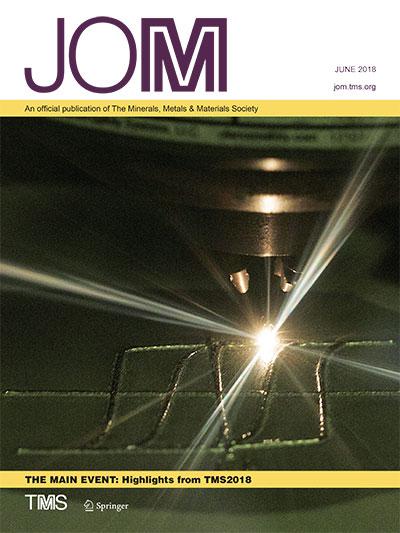 The U.S. Department of Energy’s Critical Materials Institute (CMI) used laser 3D metal printing to optimize a permanent magnet material that may make an economical alternative to the more expensive rare-earth neodymium iron boron (NdFeB) magnets in some applications.
The U.S. Department of Energy’s Critical Materials Institute (CMI) used laser 3D metal printing to optimize a permanent magnet material that may make an economical alternative to the more expensive rare-earth neodymium iron boron (NdFeB) magnets in some applications.
The magnet alloy is composed of cerium – a less expensive and more plentiful rare earth – cobalt, iron, and copper. The researchers produced a range of compositions in samples that were printed using a 3D laser metal printer.
“This was a known magnet material, but we wanted to revisit it to see if we could find exceptional magnetic properties,” said CMI scientist Ryan Ott. “With four elements, there is a vast space of compositions to hunt around in. Using 3D printing greatly accelerates the search process.”
A range of magnets was printed in two hours instead of producing them via conventional production methods, which can take weeks. The samples with the most promising properties were identified; a second set of samples were then made by conventional casting methods and compared to the originals, which confirmed the findings of the laser-printed samples.
“It is very challenging to use laser printing to identify potential permanent magnet phases for bulk materials because of the need to develop the necessary microstructure,” said CMI scientist Ikenna Nlebedim. “But this research shows that additive manufacturing can be used as an effective tool for rapidly and economically identifying promising permanent magnet alloys.”
The research is discussed in the paper, “Rapid Assessment of the Ce-Co-Fe-Cu system for Permanent Magnetic Applications,” co-athoured by F. Meng, R. P. Chaudhary, K. Ghanda, I. C. Nlebedim, A. Palasyuk, E. Simsek, M. J. Kramer, and R. T. Ott; and featured on the June 2018 cover of JOM, The Journal of The Minerals, Metals & Materials Society.
The Critical Materials Institute is a Department of Energy Innovation Hub led by the U.S. Department of Energy's Ames Laboratory and supported by the Office of Energy Efficiency and Renewable Energy’s Advanced Manufacturing Office, which supports early-stage research to advance innovation in U.S. manufacturing and promote American economic growth and energy security. CMI seeks ways to eliminate and reduce reliance on rare-earth metals and other materials critical to the success of clean energy technologies.
Ames Laboratory is a U.S. Department of Energy Office of Science national laboratory operated by Iowa State University. Ames Laboratory creates innovative materials, technologies and energy solutions. We use our expertise, unique capabilities and interdisciplinary collaborations to solve global problems.
Ames Laboratory is supported by the Office of Science of the U.S. Department of Energy. The Office of Science is the single largest supporter of basic research in the physical sciences in the United States, and is working to address some of the most pressing challenges of our time. For more information, please visit science.energy.gov.
Contacts:
Alex King, Director, Critical Materials Institute, (515) 296-4500
Laura Millsaps, Ames Laboratory Communications, (515) 294-3474
